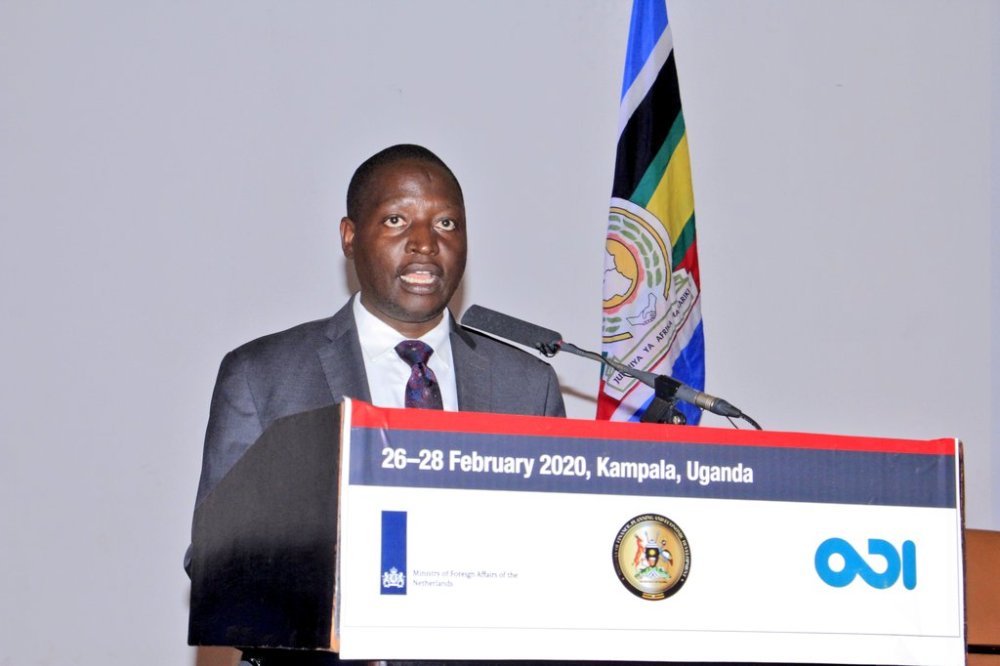
We are greatly pleased to be hosting you at this regional debt conference. The Government of Uganda in collaboration with the Netherlands Government and support from the United Nations Department for Economic and Social Affairs have organized this conference at a time when public debt is a hot topic of debate. Not only in our region but across the world.
I recall an article in the May 2019 Economist that stated I quote “while many governments around the world could bear more debt, that does not mean that they should. The risks posed by higher public debt are distant but real.”
Many of the governments across the Sub Saharan African region are grappling with integration of their National Development Plans with the delivery of the Sustainable Development Goals (SDGs) agenda. The resources required to meet these obligations are not readily available from the domestically generated revenues, thus calling for the acquisition of external financing. This has therefore brought on the challenges of maintaining macro-economic stability and fiscal sustainably whilst meeting the development goals.
According to the World Population Prospects report, the current population growth rate for Sub- Saharan Africa stands at 2.3% with an estimated current population of 1.1 billion people expected to grow to 2.5 billion by 2050. This is accompanied by the continued challenges of high levels of unemployment that result in a strain on the social services and other infrastructure in place. This has also contributed to the slow levels of economic growth as countries are unable to effectively improve their exports performance to contribute to meeting the existing debt obligations.
I believe that some countries in the region just like Uganda are experiencing low debt distress levels and could comfortably bear more debt. However, we are cognizant of the risks that our borrowing poses and we are taking action to mitigate these risks. Uganda does not aim to hit its debt limits, but rather take on the amount of debt that best supports our development objectives, all factors considered.
Many countries in our region have been the beneficiaries of Debt Relief under the HIPC and MDRI initiatives. It is only natural, given the fiscal space that this created, for debt levels to increase again. That is not a moral hazard, so long as they only increase to sustainable, or better yet, optimal levels.
While I am aware that Uganda has shown a strong appetite for the debt – we face no difficulty in repaying our debt. Over the past decade, the Government of Uganda has borrowed extensively to finance the country’s infrastructure demands. The debt-to-GDP position increased from 19.2 per cent in 2009 to 36.1 per cent in 2019. While this is a large increase, it represents the Governments ambition for economic development.
In the last decade, there has been a reduction in grants and concessional financing alongside a rise in non-concessional financing including commercial loans many of which are from unsolicited financiers. While the majority have attractive rates of interest, they typically come with additional charges which may significantly increase the true cost of the loan.
We use our debt wisely. 59% of our borrowing is still on concessional terms with multilateral institutions and development banks. Our engagement with bilateral and commercial partners is to finance specific projects that are of high returns and directed towards growth drivers and export promotion.
The strategy to allow us to continue meeting our debt obligations in the future is aiming to appropriately align the terms and conditions with the projects that we finance. Assets that are likely to generate high returns are more suitable to be financed on less-concessional terms, whereas, for social projects, we try to finance on concessional terms.
We also finance our budget partly through the domestic market, where interest rates have been decreasing but still impose immense pressure on the budget.
As a region, we face challenges in managing our debt portfolio which is often not in the control of Finance Ministries. Low debt absorption causes an increase in commitment fees. This is coupled with the budgetary pressures we face as a result of inadequate domestic revenues. This is especially a challenge in cases where the returns to investment are not sufficiently covering the debt service payments.
In order to adequately address the existing debt sustainability challenges, it calls for not only tackling the borrowing conditions but also think through ways of; improvement of the terms of trade, improvement of the contribution of the exports sector, expanding the tax base, inclusion of agriculture and the informal sector in the tax system and harnessing the opportunities of the information and communication technology to improve collection of taxes.
Before I end my speech I would like to reiterate our gratitude to the Government of Netherlands and the United Nations Department for Economic and Social Affairs for the commitment they have exhibited in ensuring that we are all gathered here. Thank you very much.
As I conclude, I urge that these issues contribute to the discussions you will have over the next three days, with an aim to identify ways of handling the issues pertaining. I am looking forward to hearing the outcomes of this conference and being involved in future dialogues.
I now have the pleasure of inviting the Right Honourable Prime Minister to make his remarks.
Thank you.
